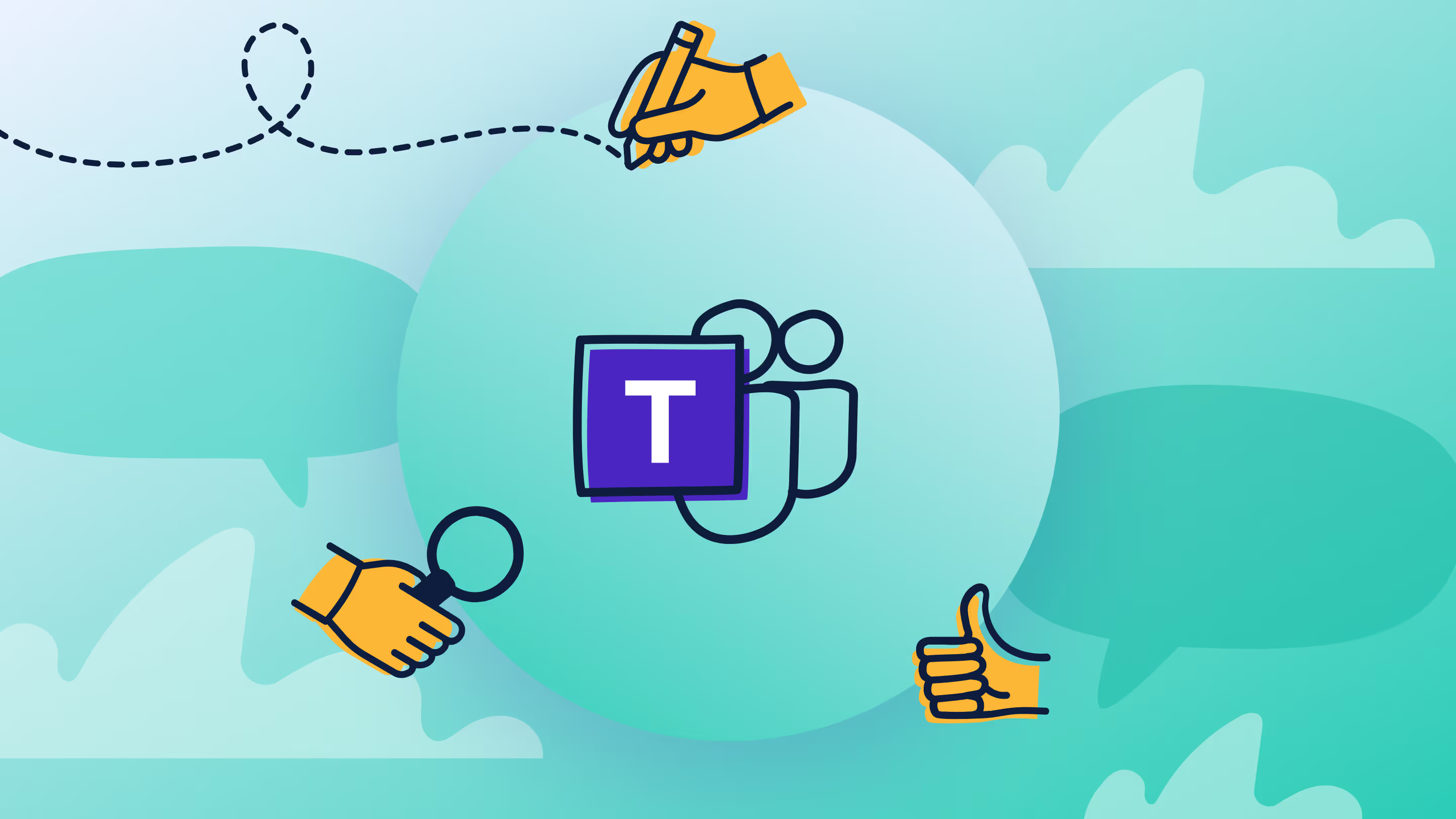What is Microsoft Loop and how to use it

Table of contents
Microsoft Loop is a single place where people can collaborate to work on documents, keep everything organized, and share information smoothly. We'll explain the impact of Loop and how it can transform collaborative experiences while leveraging AI.
When we chatted with Jeff Teper—Microsoft's President of Collaborative Apps and Platforms (aka the founder of SharePoint)—about the latest innovations in Microsoft 365, one challenge became clear: addressing the changing needs of the workplace and enabling new ways of working.
The answer? Microsoft Loop.
With Loop, Microsoft is bridging the remote and hybrid teams gap. It lets you collaborate with others in shared workspaces to manage tasks and projects that sync across Microsoft 365 apps and services.
So what's unique about it? For one thing, you can break down your content into smaller parts and share just what's needed with the right people.
Keep reading to unpack Loop's key features and capabilities and how to use them.
What is Microsoft Loop?
Microsoft Loop is a feature and app in Microsoft 365. It helps people work together across devices and apps. With Loop, you can organize and find all the tools and files you need for your project in one place.
Transform any content on a Loop page into a component. Then, you can easily copy and paste the content into apps like Microsoft Teams, Outlook, Whiteboard, and Word on the web. And no matter where you share them, they're always up to date. Plus, you can edit them right in those apps!
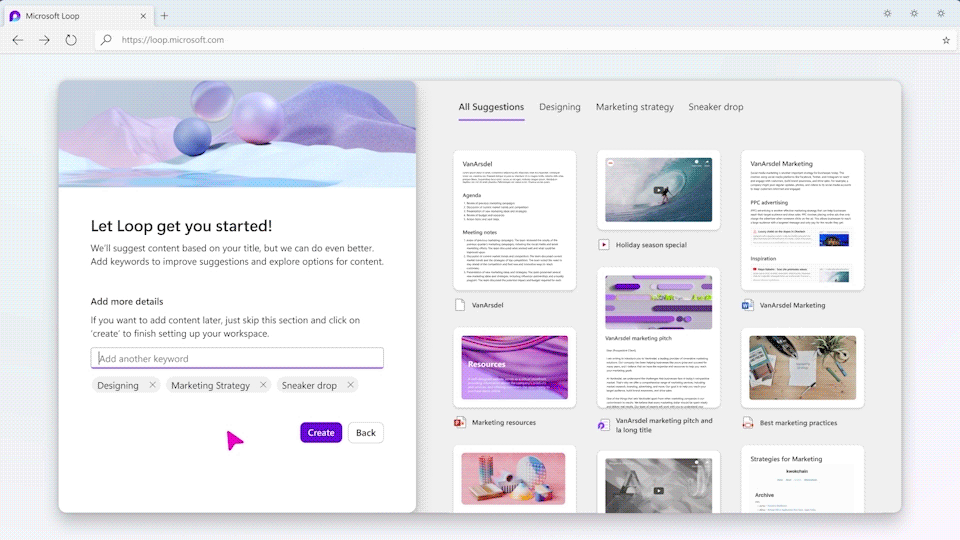
The workspaces are flexible, allowing you to customize them using templates and drag-and-drop features.
Unveiled at Microsoft Ignite in 2021, Microsoft Loop is the latest confirmation that Microsoft is continuing to invest in collaboration tools and technologies to streamline work, removing barriers and improving productivity.
When we asked Jeff Teper what value Loop will bring to organizations and users, he summarized it in a few words: Fluid, friction-free collaboration. Check out what else he had to say about it in this short clip:
Good to know
- The Microsoft Loop app is the central hub where users can access its three key elements: components, workspaces, and pages.
- Loop components are like portable building blocks that stay in sync wherever you share them, such as in documents, Teams chats, emails, or anywhere the component is embedded. The components you can create include lists, tables, notes, and more across the Microsoft 365 apps.
- Loop workspaces are shared spaces where you and your team can organize and track everything important to your project, enabling easy collaboration and goal tracking.
- Loop pages are canvases that bring together people, components, links, tasks, and data. They can start small, expand as needed, and be shared across Microsoft 365 apps as links or embedded components.
- Security and permission settings apply to Loop components and pages, ensuring control over access.
- Microsoft Loop continuously evolves with new capabilities, including AI-powered suggestions and summarization features. Microsoft 365 Copilot, integrated with Loop, provides AI-powered prompts and assistance for creating and collaborating. For example, it guides you with prompts like "create," "brainstorm," "blueprint," and "describe." Or you can type in a prompt, like "Help me create a mission statement."
Microsoft Loop is tightly integrated with other Microsoft 365 services
Here's some more context on how Loop relates to other Microsoft 365 products:
- Microsoft Teams: You can easily share and access Loop components and pages right within Teams. It makes collaborating and staying connected with your team a breeze.
- Outlook: With Loop, you can incorporate Loop content into your emails in Outlook. It helps you share and access essential project updates without leaving your email inbox.
- Whiteboard: Loop works hand in hand with Whiteboard, making it easy to share and access Loop components and pages within your collaborative whiteboarding sessions. It's great for brainstorming and visual collaboration.
- Word (web): When working on documents in Word for the web, you can include Loop content. It allows you to collaborate on written content.
- Planner: The tasks you assign in the Microsoft Loop app and task list component sync with Microsoft Planner and To Do. This way, you always have an updated list of tasks that need your attention.
- Copilot: Loop integrates with Copilot, an AI-powered assistant. It gives you helpful suggestions and prompts as you work in Loop.
Loop is rolling out in Microsoft 365, and you can try it in a public preview.
What are Loop components?
A loop component is a feature that lets you perform specific actions or interact with content in a structured way.
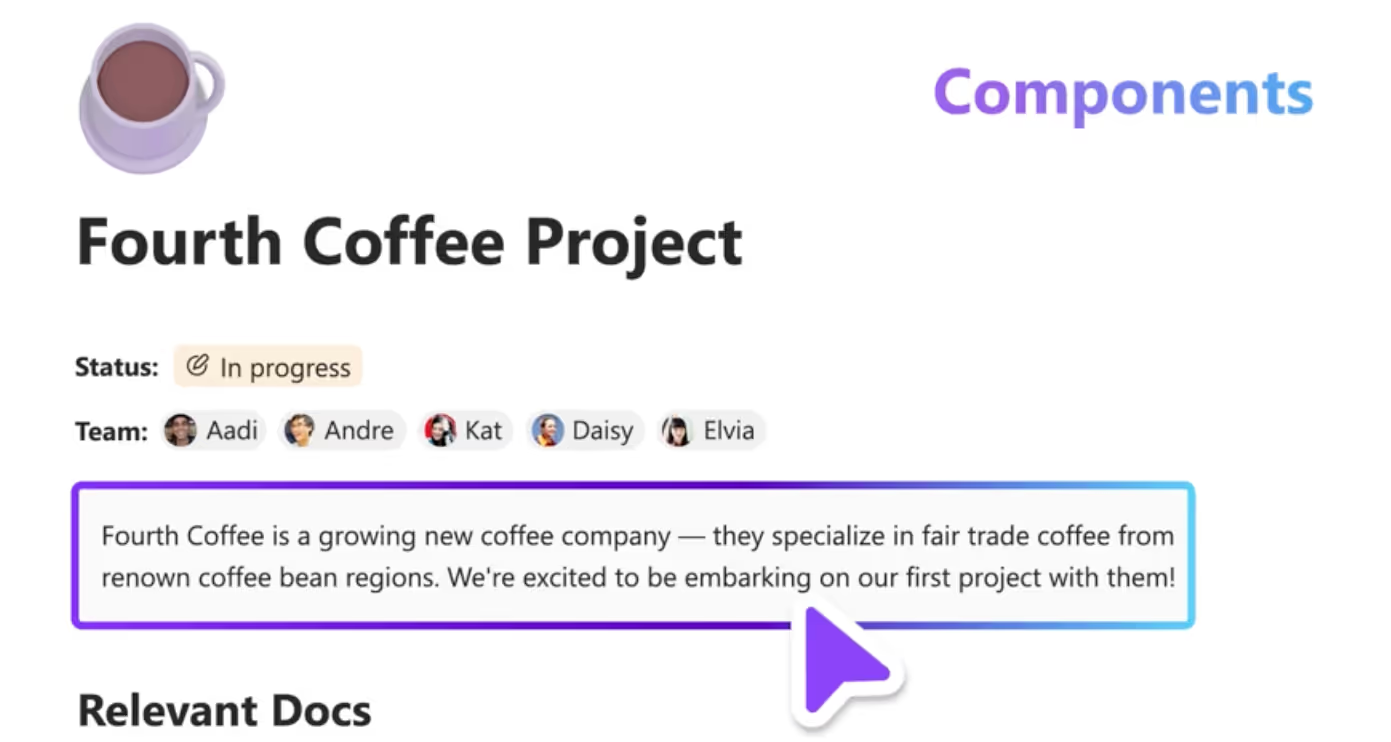
For example, it can be a task module where you can create and manage tasks, track progress, assign responsibilities, and set deadlines. It can also be a module for creating and editing documents, taking notes, or organizing information.
Let's say you make a Loop component with a table. You and your co-workers can work together to add, change, or delete stuff in the table. What's also great is that you can see the changes happening in real-time and know who's doing what.
These components work across Microsoft 365 apps like Outlook, Teams chat, and Whiteboard. If you create a Loop component in one app, you can easily share it by copying and pasting a link. Then, everyone can keep working on it in their own favorite app.
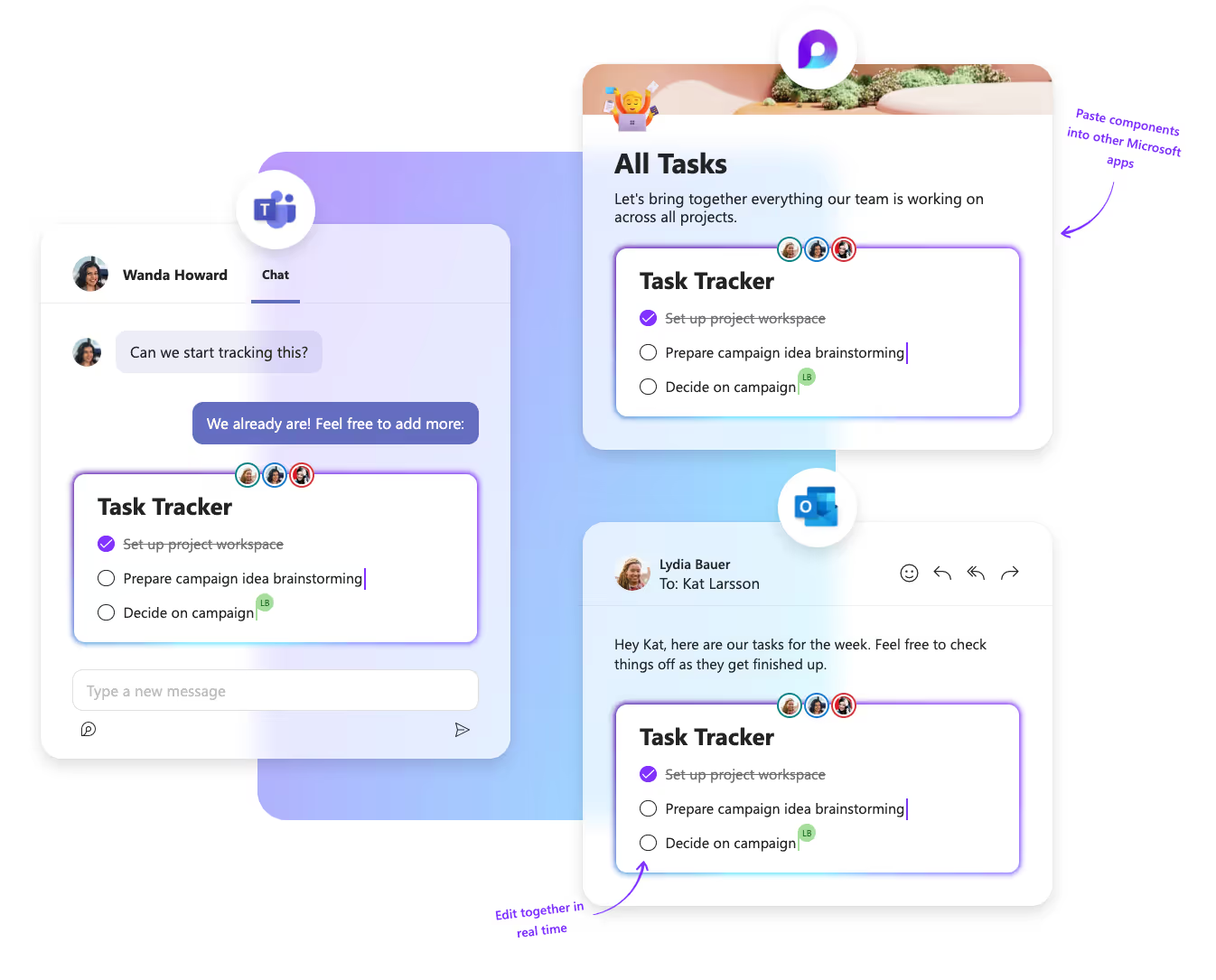
The best part? You don't need to use the Microsoft Loop app to start using Loop components. They're already integrated into other apps that you already use, like Outlook and Teams!
Let's take a look.
How to use a Microsoft Loop component in Teams
Have you ever sent content to a chat and wanted your team to easily add their ideas and feedback without going back and forth? Well, now you can—with Loop components!
Loop components are available in Teams chats. They're handy little tools that let you create notes, task lists, numbered lists, and tables.
When you send a Loop component, everyone in your chat can edit it right away. No need for back-and-forth discussions. Just collaborate inside the message itself.
To try out Loop components in Teams chat:
- Go to the messaging area
- Select the Loop app icon
- Choose a component type
- Add your content and hit "Send." Your whole chat can now join in and edit the message.
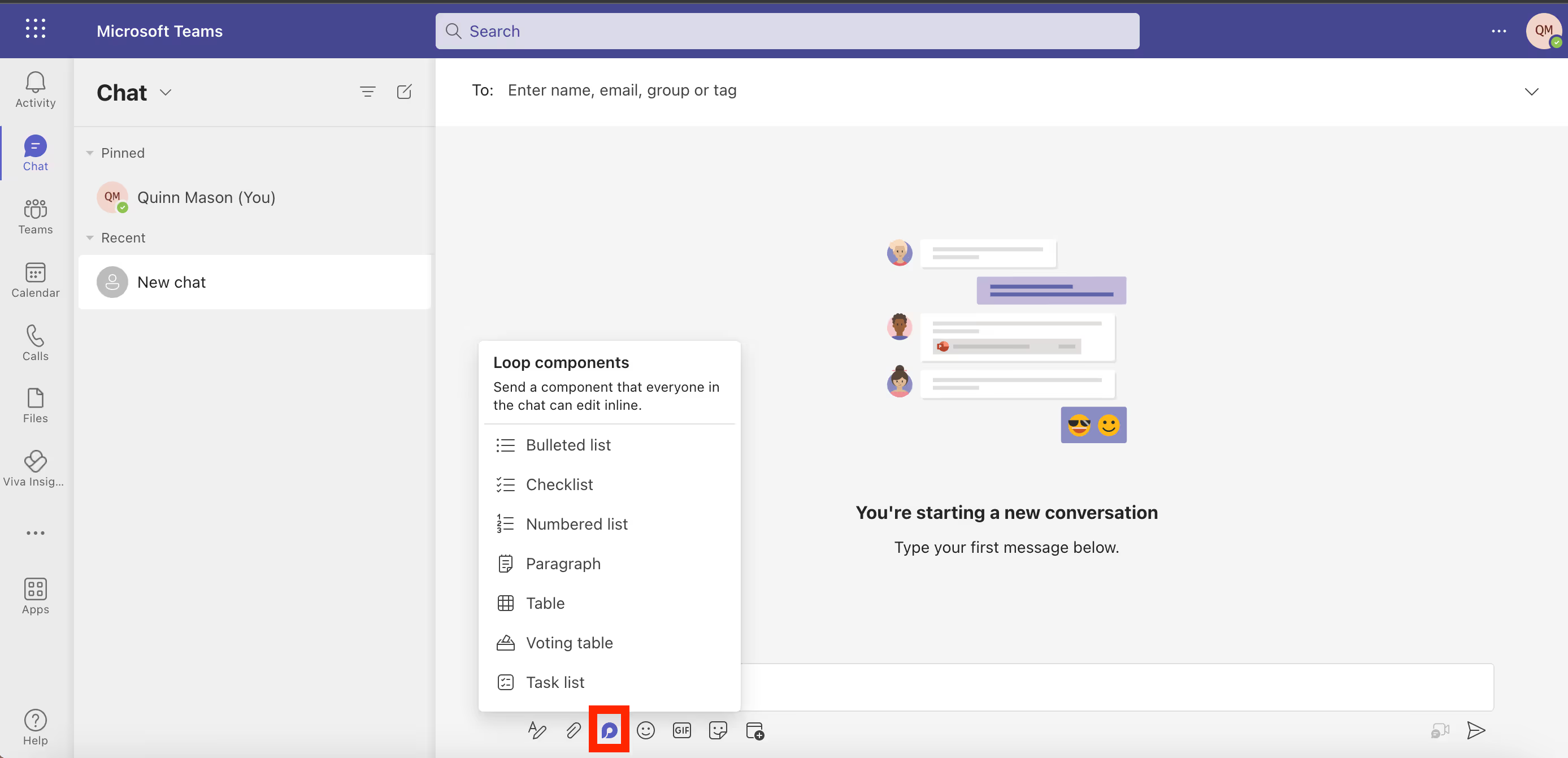
Once you send these Loop components in a chat, they're automatically saved as fluid files (.fluid) in the Teams chat files and are stored in your OneDrive under the Microsoft Teams Chat Files folder. So you don't have to worry about losing your work.
To learn more about using Microsoft Loop in Teams, check out the official Microsoft documentation on how to send a Loop component in Teams chat.
Creating a Loop component in Outlook
Like in Teams chats, you can include a Loop component in any Outlook item (email or calendar event).

By creating a Loop component (e.g., table, paragraph, or task list) in an Outlook email and sharing its link in a Teams chat, others can view and provide comments or edits. These changes will instantly appear in the Outlook mail for everyone to see.
Loop components are automatically created and saved to a file in OneDrive.
Check out the official Microsoft documentation for steps to create, edit, and share a loop component in Outlook.
We saw people were bouncing around in emails, documents, and chats. If components, like, "what's the marketing budget," or "what's the issues list," were just shareable across documents and conversations, wherever they lived, there'd be one version of truth.
Jeff Teper, President at Microsoft
Changing your Loop component's sharing settings
By default, anyone in your organization can access and edit a Loop component. You can change that using the "Sharing settings" panel.
To prompt the sharing settings panel in Microsoft Teams chat:
- Click on "People in your organization with the link can edit" at the top of your Loop component.
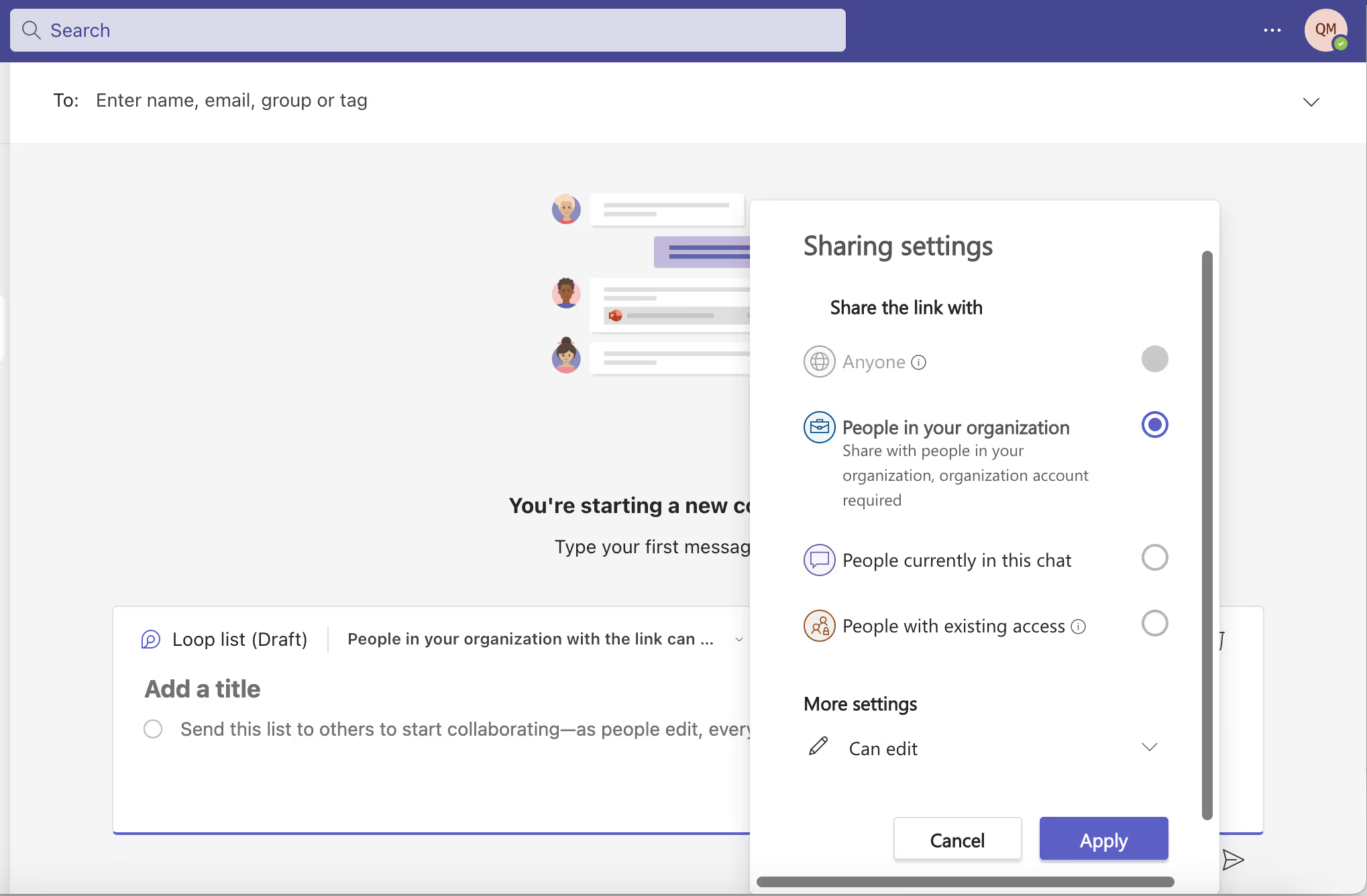
To prompt the sharing settings panel in Outlook:
- Click on the loop component within the email. It's usually located in the upper left corner

If you're not keen on letting others make changes to your Loop components, go to More settings in Teams and switch from "Can edit" to "Can view." Similarly, go to Other settings in Outlook and uncheck "Allow editing."
How to use Microsoft Loop
The fun starts at the Loop home page, or download the Loop mobile app for Android and iOS.
To get started with the Microsoft Loop app for your organization, follow these steps:
- Start by creating a new Microsoft 365 group that includes all the users in your organization who should have access to the Loop app during the Public Preview phase.
- Sign in to the Microsoft 365 Apps admin center and configure a Cloud Policy for the aforementioned Microsoft 365 group. This policy will enable the Microsoft Loop app for them.
- Allow some time, usually around an hour, for the policy to propagate, and then you're all set to log in and start using Loop!
For detailed instructions and more information, check out Microsoft's Loop admin settings documentation.
Microsoft Loop app public preview limits
In the public preview of Microsoft Loop, you should know a couple of things about workspace size and member limits. So let's break it down:
- Workspace size limit: Each Loop workspace has a maximum size limit of 5 GB. This means you can store files and content within a workspace, but remember that the total size cannot exceed 5 GB. So, manage your storage wisely!
- Workspace member limit: A Loop workspace can have up to 50 members. So, only a limited number of users can collaborate and access the workspace at the same time.
These limits help Microsoft Loop run smoothly during the preview phase and gather user feedback. But as Loop continues to evolve, these limits could adjust to fit our needs.
Microsoft 365 Copilot is integrated with Loop
Copilot is part of Microsoft Loop. It's an AI feature that helps you create and collaborate more effectively. It's like your guide that provides suggestions and prompts such as "create," "brainstorm," "blueprint," and "describe." If you have a specific prompt in mind, type it in, like: "Help me create a mission statement."
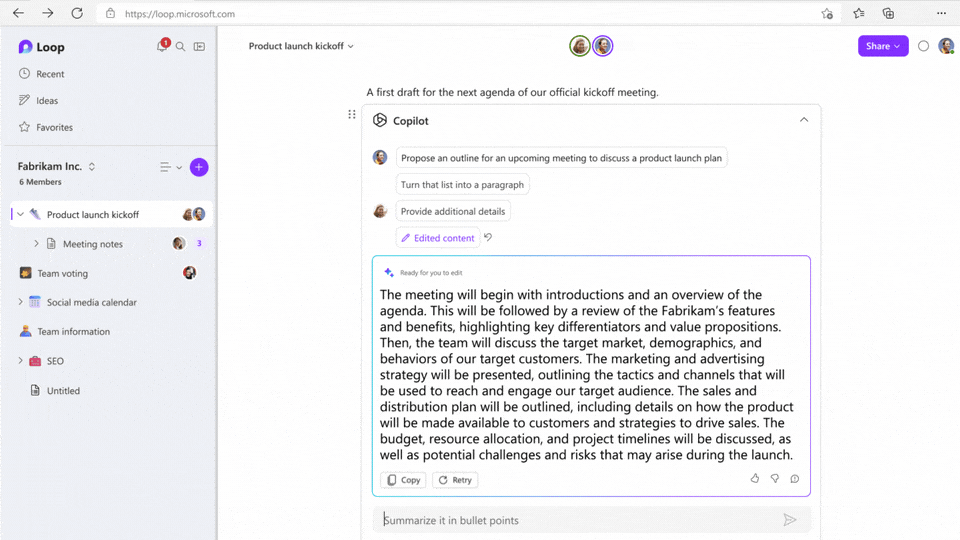
Copilot in Loop is great for quickly understanding key information through summarization. It's like having a helpful assistant that summarizes the content of a Loop page and linked documents, so everyone can get straight to the point. You can even tweak the summaries to include more details or context, and share them with others as Loop components to keep everyone in the loop. The exciting part is that the summarization feature in Loop will be rolling out over the next few months!
Microsoft Loop is set to revolutionize how we work and collaborate, creating a more connected and productive workplace. We're eager to try it out and will keep you in the loop (pun intended) on any new developments. Stay tuned!
.jpg)


.svg)
%20(1).avif)





